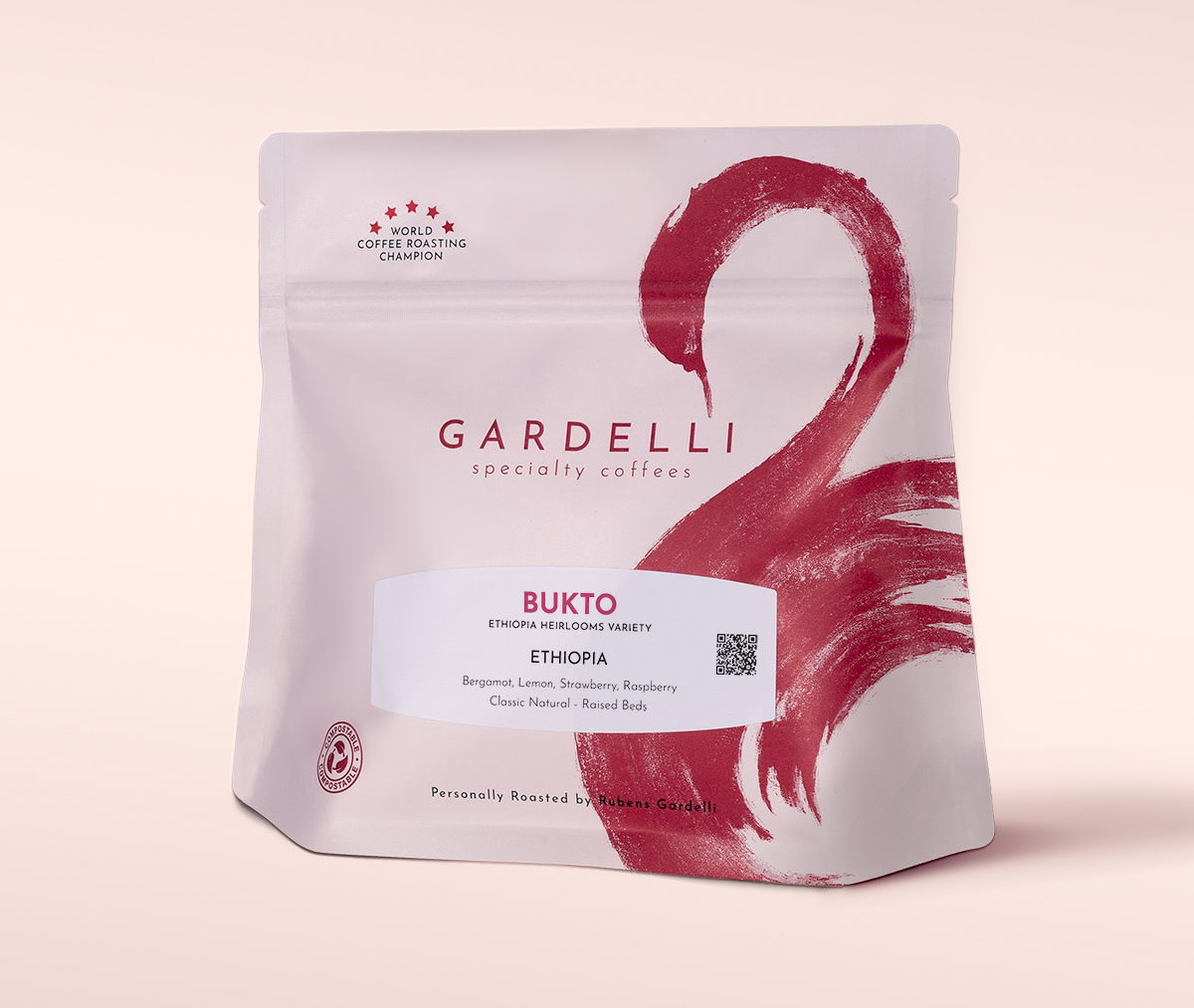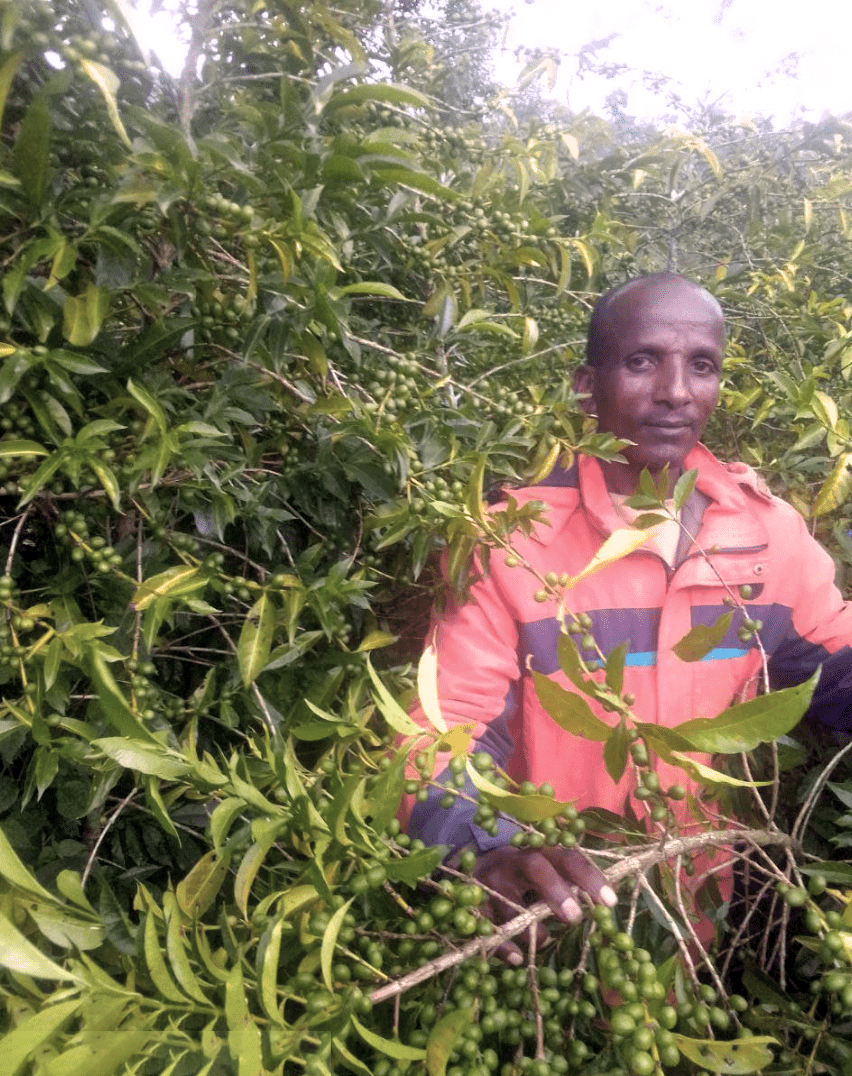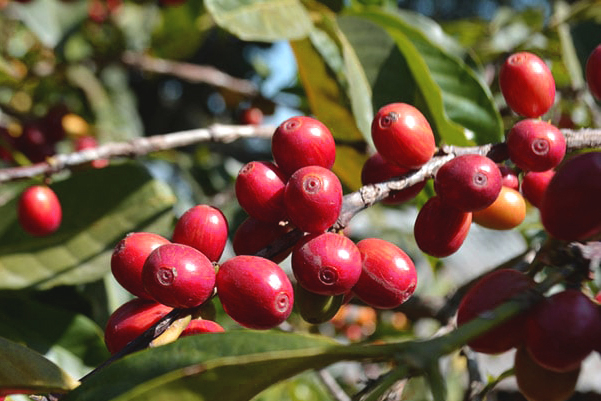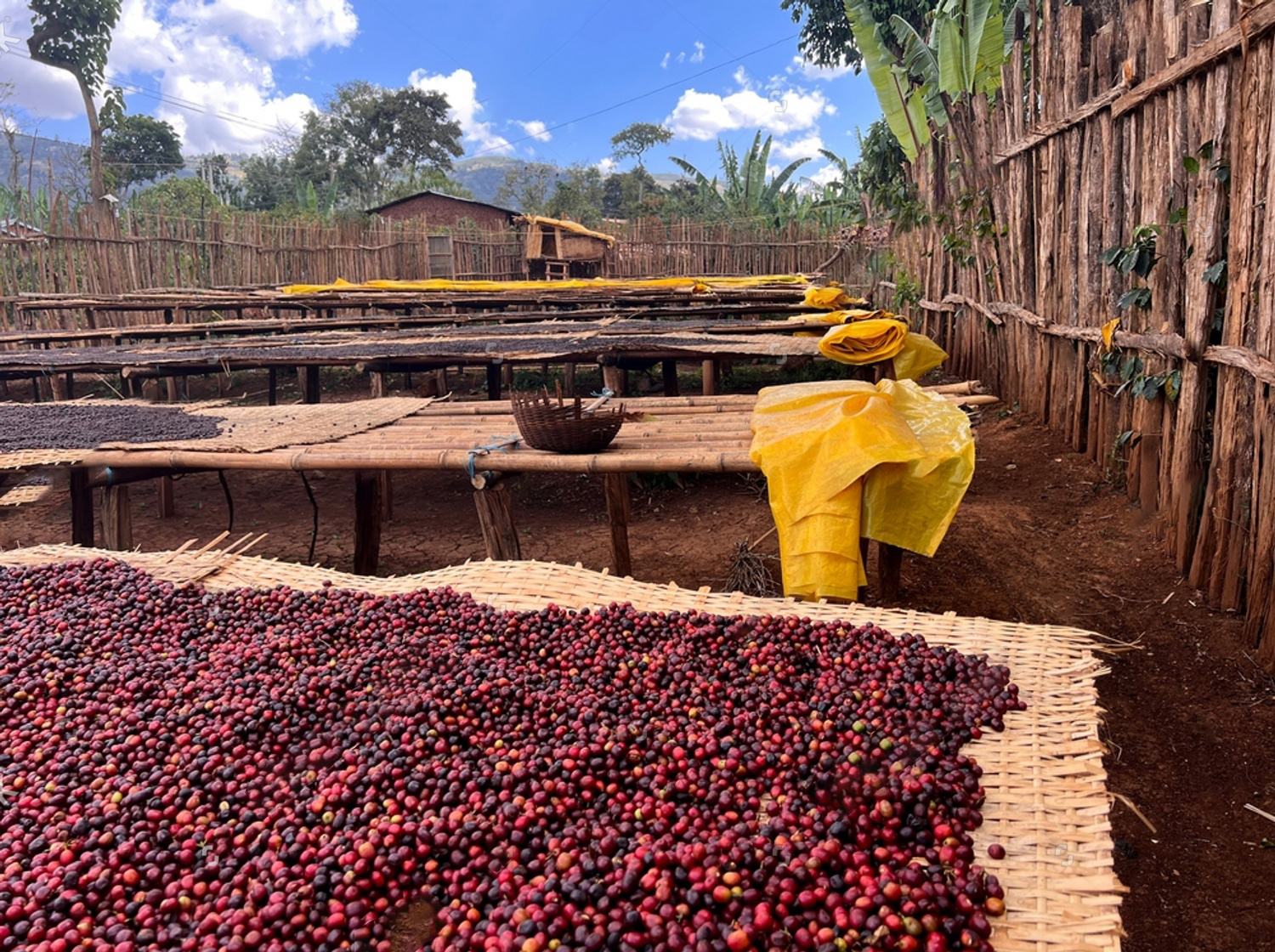








Ethiopia
Cup Notes: Apricot, Bergamot, Lime, Blackcurrant, Jasmine
A rare, single-farm Ethiopian coffee from Sidama, celebrated for its fruity, floral profile and exceptional quality.
Suggested for espresso and filter
when we roast
We freshly roast to order all coffees on Monday, Wednesday and Friday (excluding national holidays), and ship the same day! Cut-off time is 11:59pm (UTC+1) of the day before the roast day. *We only ship whole beans*
Bukto Dure Bore is a passionate coffee farmer, in the heart of the Sidama region. His journey into coffee cultivation began in 2022, when he first planted coffee on his land in Arbegona Woreda, nestled in the highlands at an altitude of 1850 masl. Bukto’s decision to cultivate coffee wasn’t just about farming—it was about creating a legacy and elevating the quality of coffee from his land.
In 2024, Bukto’s hard work was rewarded when his coffee won third place in the Cup of Excellence Ethiopia competition.
For Bukto, coffee represents more than just a crop—it is the new gold. It’s his ticket to a brighter future, not only for himself but for his community. With each harvest, Bukto continues to refine his craft, carrying the pride of Sidama’s rich coffee heritage forward onto the global stage.

Ethiopian heirlooms, why the generic name? It's estimated that there are somewhere in-between six and ten thousand coffee varietals in Ethiopia. And due to this colossal figure, there hasn’t been the genetic testing to allow buyers to distinguish the varietal. With the cross pollination that naturally happens in the wild, the name "Ethiopian Heirloom" exists as a catch-all phrase to describe this happenstance. However, that really makes Ethiopian quite a mystery and an interesting mystery as each village or town could potentially have a different varietal which could carry very unique properties.
The local indigenous ‘heir-loom’ varietals - which grow wild in Ethiopia - are responsible for the unique flavour notes which make for an unusual but refined cup. When processed naturally through sun-drying these present with juicy and jammy stone-fruit flavours, floral and chocolate notes with a creamy body.

The dry process seems simple: pick the fruit, lay it out in the sun until it changes from red to brown to near-black, then remove the thick, dried outer layer in one step to reveal the green bean. This method is ideal for arid regions, where the sun and heat can dry the seed inside the intact fruit skin. The coffee is typically dried on raised beds, which allow for more even drying and reduce the risk of contamination from moisture or mould.
It is often referred to as “natural coffee” because of its simplicity, with the fruit remaining intact and undisturbed, much like drying grapes into raisins. Due to its minimal investment, the dry process is commonly used to produce low-quality commodity coffee in regions with the right climate for drying the fruit and seed.
However, it is ineffective in humid or wet regions. If drying doesn't progress quickly enough, the fruit degrades, rots, or becomes covered in mould.
Dry-processed coffees can also be wildly inconsistent. To achieve a clean, fruity, sweet, and intense cup, the dry process (DP) requires more manual labour than the wet process. Even the most careful pickers may inadvertently harvest unripe or semi-ripe cherries alongside the fully ripe ones. If these are not removed within the first days of drying, the green ones turn brown and can be difficult to distinguish from the ripe fruit.
